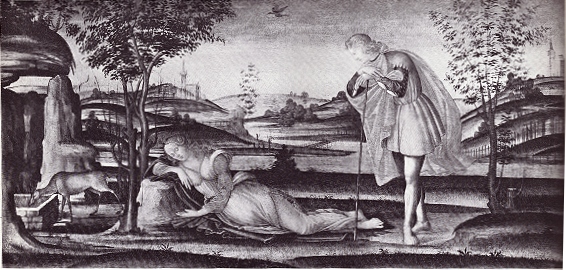 |
daphne1
“Daphne Found Asleep by
Apollo”
by the Master of the Apollo
and Daphne Legend (that is, an anonymous painter)
c. 1500 A.D.
transferred from wood to
canvas
25 5/8” x 53 ¾”
cassone panel, part of a
group (see daphne2)
note that
the subject of this painting has no actual basis in myth, also no other
representation in Renaissance art
from the Samuel H. Kress
Collection, New York, NY |
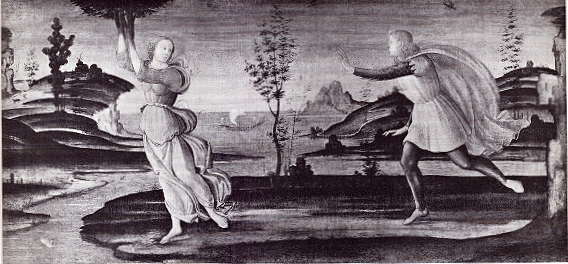 |
daphne2
“Daphne Fleeing from Apollo”
by the Master of the Apollo
and Daphne Legend (that is, an anonymous painter)
c. 1500 A.D.
transferred from wood to
canvas
25 5/8” x 53 ¾”
cassone panel, part of a
group (see daphne1)
from the Samuel H. Kress
Collection, New York, NY |
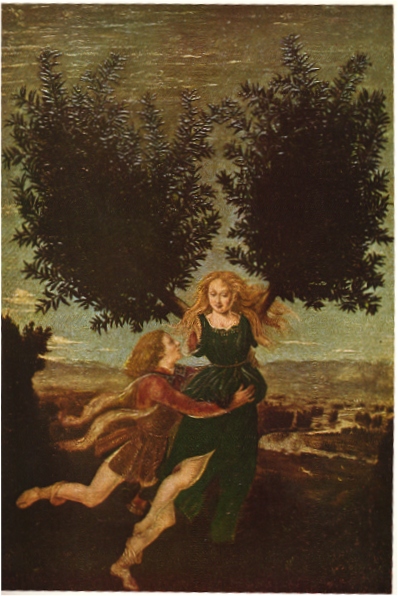 |
daphne3
“Apollo and Daphne”
by Antonio Pollaiuolo (1429-1498)
shortly after 1475
11 5/8” x 7 7/8”
National Gallery, London
“Indeed, we are justified in reading into his Apollo and
Daphne… a symbolic value; since it shows how, in the throes of
passionate emotion, man becomes at one with the world of nature.
Pollaiuolo was the first artist to give expression to his
humanistic culture in a steady flow of pictures having mythological
subjects…. Mythology—especially as it figures in Ovid’s
Metamorphoses—was a meeting-point, beyond space and time, between
history and nature; it enabled the artist to break with the established
order of space (perspective) and that of recorded time (the march of
history). Hence his ability
to impart to gestures a new immediacy and to the aspects of nature an
unprecedented vividness.” (Lassaigne page 132) |
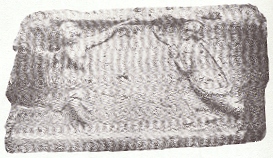 |
daphne4
c. 337-340 AD?
Originally
from Risstissen, a city on the right bank of the Danube (founded c. 50 ad)
Though hard to see, this (moulding?) shows
Daphne on the left with Apollo (his robe coming off) pursuing her.
Her left arm is outstretched behind her, and is transforming into a
branch of a tree.
from Musee de Stuttgart
(Esperandieu page 410) |
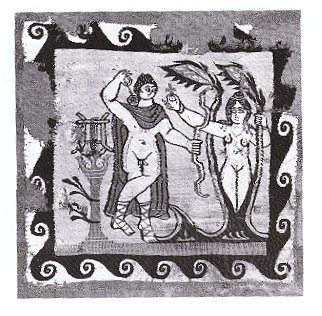 |
daphne5
“Apollo and Daphne”
c. 6-7 ad?
textile
“Apollo casually [threatens] Daphne, already turning into a tree;
but she proffers to him a cross: the christianzing of the pagan subjects
is beginning and will gather pace through the remaining record of Coptic
art...” (Boardman, page 179)
notice also, that Daphne is wearing a cross around her neck
from
Antinoopolis (Northern Africa/Egypt)
from
Paris, Louvre
(Boardman, page 181) |
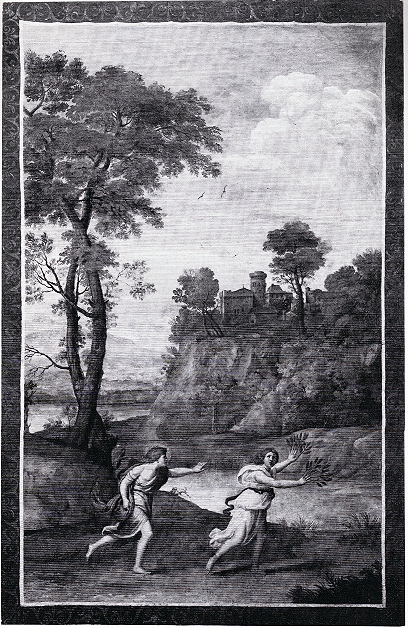 |
daphne6
“Apollo and Daphne”
Domenichino and Alessandro Fortuna(?)
1616-1618
fresco, 311.8 x 189.2 cm
National Gallery, London
Fresco
could have been done by an assistant, possibly not Fortuna (scholars say
that the figures’ appearances are too clumsy to be done by Domenichino.)
(Spear, plate 186) |
![]()
![]()